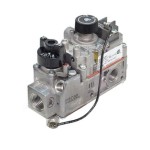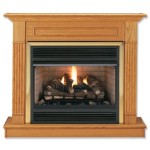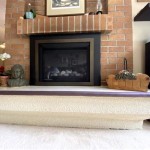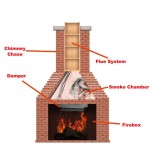Fireplace Mantel and Bookshelves Plans: Integrating Function and Aesthetics
The integration of a fireplace mantel and bookshelves represents a sophisticated approach to maximizing space utilization and enhancing the aesthetic appeal of a living area. These architectural and design elements, when combined effectively, offer a focal point that is both functional and visually pleasing. Detailed and well-considered plans are crucial for ensuring a successful and harmonious integration.
This article explores the key considerations and planning stages involved in designing and implementing fireplace mantel and bookshelves plans. It examines the factors that influence design choices, structural requirements, and the integration of these elements into a cohesive architectural whole. The information provided aims to offer a comprehensive understanding of the process, assisting individuals in achieving a seamless and aesthetically pleasing combination of a fireplace mantel and bookshelves in their homes.
Understanding Structural and Spatial Considerations
The initial phase of developing fireplace mantel and bookshelves plans necessitates a thorough assessment of the existing structural environment. This includes analyzing the dimensions of the wall where the fireplace and bookshelves will be located, as well as evaluating the surrounding architectural elements. The load-bearing capacity of the wall is paramount, particularly when dealing with substantial bookshelves that will house a significant number of books and decorative items. Consulting with a structural engineer may be necessary to ascertain the wall's ability to support the added weight. The type of fireplace, whether it is a traditional wood-burning fireplace, a gas fireplace, or an electric fireplace, also influences the design constraints.
Fire safety regulations are a critical consideration. Maintaining appropriate clearances between the fireplace opening and combustible materials, such as wood bookshelves, is essential for preventing fire hazards. Building codes typically specify minimum distances that must be adhered to, and it is imperative to comply with these regulations. Heat shielding materials can be incorporated into the design to mitigate the risk of heat transfer from the fireplace to the surrounding bookshelves. Ventilation requirements for the fireplace must also be considered, ensuring that adequate airflow is maintained for safe and efficient operation. The positioning of electrical outlets and wiring for lighting and electronic devices within the bookshelves should be carefully planned, adhering to electrical safety standards.
Spatial considerations play a significant role in determining the optimal size and configuration of the fireplace mantel and bookshelves. The overall dimensions of the room, the ceiling height, and the placement of windows and doors influence the design choices. A large, elaborate mantel and bookshelf unit may overwhelm a small room, while a smaller, more minimalist design may be better suited for a compact space. The depth of the bookshelves should be considered in relation to the room's dimensions, ensuring that they do not protrude excessively and impede the flow of traffic. The layout of the furniture in the room should also be taken into account to ensure that the fireplace mantel and bookshelves are integrated harmoniously into the overall design scheme.
Design and Material Selection
The design of the fireplace mantel and bookshelves should reflect the overall style and aesthetic of the home. Whether the design is traditional, contemporary, or eclectic, the mantel and bookshelves should complement the existing architectural features and décor. A traditional design might incorporate ornate moldings, raised panels, and classic architectural details, while a contemporary design might feature clean lines, minimalist forms, and modern materials. The selection of materials is crucial in achieving the desired aesthetic and ensuring the longevity of the structure. Wood is a popular choice for both the mantel and bookshelves, offering warmth, versatility, and a range of finishes. Different types of wood, such as oak, maple, cherry, and pine, can be used to create various looks and textures. The choice of wood should be based on its durability, grain pattern, and compatibility with the desired finish.
Stone, such as marble, granite, or limestone, can be used for the fireplace surround and mantel, adding a touch of elegance and sophistication. Stone is a durable and heat-resistant material that can withstand the high temperatures associated with fireplaces. The color and texture of the stone should be carefully selected to complement the surrounding décor and architectural elements. Metal accents, such as wrought iron or stainless steel, can be incorporated into the design to add a contemporary or industrial touch. Metal can be used for decorative elements, such as fireplace screens, hardware, and bookshelf supports. The choice of metal should be based on its durability, corrosion resistance, and compatibility with the overall design scheme.
The layout and configuration of the bookshelves should be carefully planned to maximize storage space and visual appeal. Adjustable shelves offer flexibility in accommodating books of different sizes and shapes. The depth of the shelves should be sufficient to accommodate the largest books in the collection. The spacing between the shelves should be optimized to prevent overcrowding and allow for easy access to the books. The inclusion of drawers or cabinets below the bookshelves can provide additional storage space for items that are not suitable for display. Lighting within the bookshelves can enhance the visual appeal of the display and make it easier to find specific books. Recessed lighting, strip lighting, or individual spotlights can be used to illuminate the bookshelves and highlight specific items.
Construction and Installation Considerations
The construction and installation phase requires meticulous attention to detail and adherence to safety standards. The plans should include detailed drawings and specifications for each component of the fireplace mantel and bookshelves, including the dimensions, materials, and construction methods. A skilled carpenter or contractor should be hired to execute the plans, ensuring that the construction is structurally sound and aesthetically pleasing. Before beginning construction, it is essential to obtain any necessary permits from the local building authorities. Building codes typically regulate the construction of fireplaces and bookshelves, and it is imperative to comply with these regulations.
The fireplace mantel should be securely attached to the wall, using appropriate hardware and fasteners. The type of fasteners used will depend on the type of wall construction and the weight of the mantel. The connection between the mantel and the fireplace surround should be seamless and aesthetically pleasing. The bookshelves should be constructed using high-quality materials and techniques, ensuring that they are strong and stable. The shelves should be level and securely attached to the bookshelf frame. The bookshelves should be attached to the wall to prevent them from tipping over, especially if they are tall or heavily loaded. The attachment method will depend on the type of wall construction and the weight of the bookshelves.
Once the construction and installation are complete, the fireplace mantel and bookshelves should be inspected to ensure that they meet all safety standards and aesthetic requirements. The fireplace should be tested to ensure that it is functioning properly and that there are no fire hazards. The bookshelves should be inspected to ensure that they are level, stable, and capable of supporting the intended load. Any imperfections or deficiencies should be corrected promptly. The final step is to finish the fireplace mantel and bookshelves according to the desired aesthetic. This may involve painting, staining, or applying a protective coating. The finishing process should be done carefully to ensure a smooth, even finish that complements the overall design scheme.

One Project At A Time Diy Blog Cabin Fireplace Part 2 Built Ins

I Love How This Simple Diy Mantel Changes The Fireplace Find Out To Build A Or F Shelves

How To Turn A Bookshelf Into Faux Fireplace Mantle Miss Mustard Seed S Milk Paint

Diy Fireplace Mantel Shelf Her Tool Belt

How To Build A Diy Mantel Shelf Simply Home
Diy Fireplace Surround And Built Ins Our Blessed Life

Diy Fireplace Surround And Built In Bookshelves Build Create Home

Diy Modern Farmhouse Floating Mantel Free And Unfettered

Iheart Organizing Diy Fireplace Built In Tutorial

Fireplace Mantel Surround Pt 2 Bookcase








